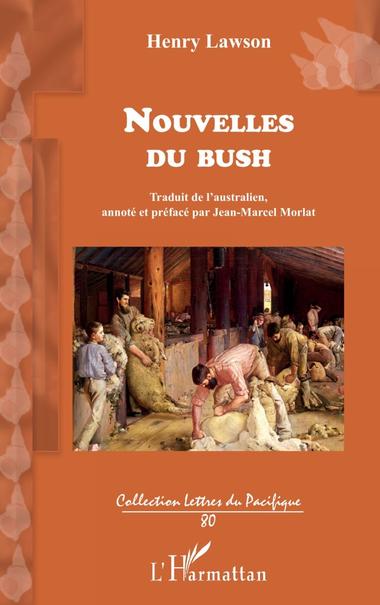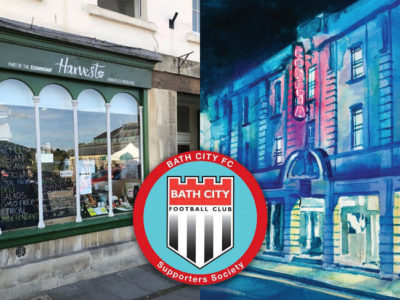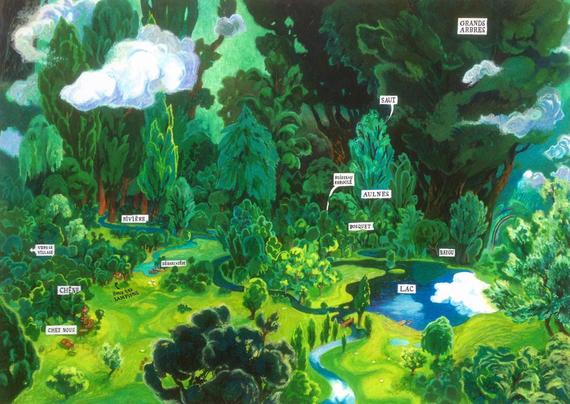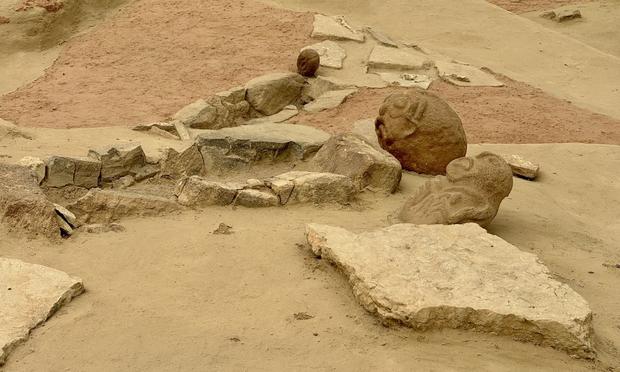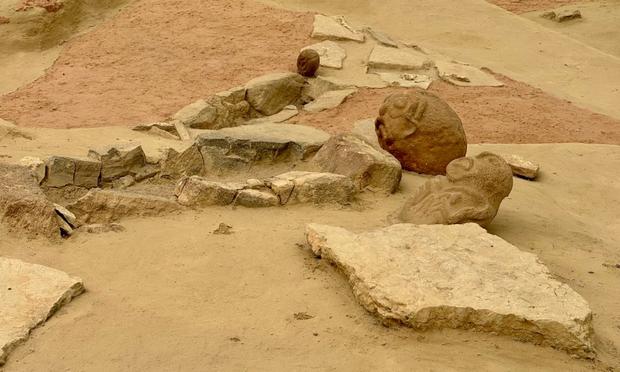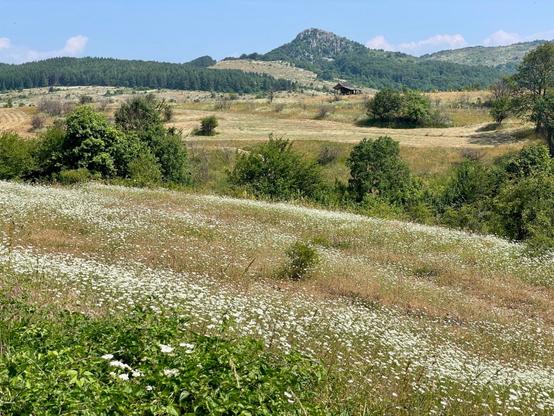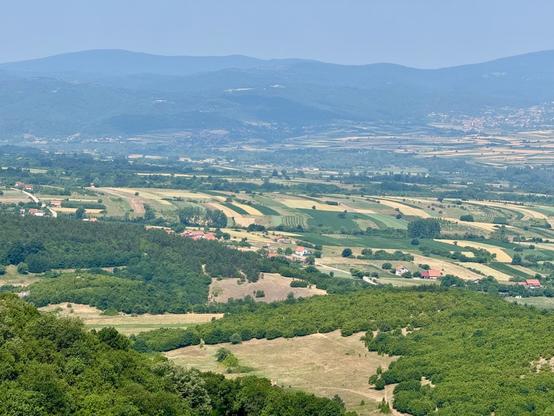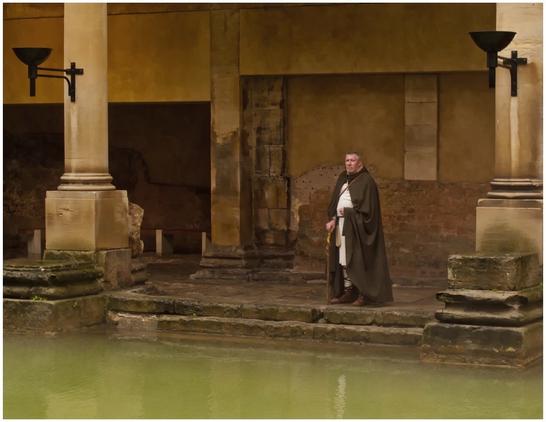#RomanS
Agnès Riva, romancière très urbaine
✍️ 𝗖𝗲𝗻𝘁𝘂𝗿𝗶𝗼𝗻 𝘁𝗿𝗶𝗼 𝗰𝗼𝗺𝗺𝗶𝘁 𝘁𝗼 𝗥𝗼𝗺𝗮𝗻𝘀 𝗳𝗼𝗿 𝟮𝟱/𝟮𝟲
We are pleased to announce the return of three Centurions in Jack Batten, Dan Greenslade and Joe Raynes, who have all agreed contracts for the coming season.
https://bathcityfc.com/centurion-trio…
⚫️⚪️ #Romans
Nouvelles du bush – Henry LAWSON – 2021 – L’harmattan
Quatrième de couverture
Henry Lawson (1867-1922) est l’un des représentants incontournables de la littérature australienne de la période coloniale, ainsi qu’une figure littéraire nationale, qui occupe encore une place importante dans la psyché australienne. Pendant de nombreuses années, il a travaillé pour plusieurs quotidiens dont le « Bulletin », et passé de longues périodes à sillonner la Nouvelle-Galles du Sud. Cette expérience a nourri son écriture et lui a permis, dans un style réaliste, coloré et empreint d’humour, de pathos et d’ironie, de décrire le bush et de rendre compte de la vie difficile des broussards pour lesquels il éprouvait une empathie sans faille. Ce choix de vingt nouvelles représentatives de son style, permettra au lectorat francophone de découvrir des personnages hauts en couleur et de voyager dans des contrées à la beauté aride et époustouflante.
Mon Avis
Ce roman a été écrit au 19e siècle, à l’époque de la colonisation de l’Australie. Je le précise, car, au début, certains mots, certaines expressions concernant les autochtones, sont dérangeants. Le replacer dans son contexte politique et historique de l’époque, a permis de prendre du recul. Cependant, l’un n’excuse pas l’autre, mais, permet d’apprécier la lecture. Ce recueil de nouvelles montre des tranches de vies dans le bush, cette partie sèche et peuplée de bêtes sauvages, très dangereuses. Cette partie australienne où l’humain semble oublier son humanité. Pourtant, il respecte les morts et partage gratuitement ses rations. C’est assez contradictoire, non?
Ce recueil de nouvelles raconte la rude vie des colons blancs. Et de leurs voisins autochtones, au 19ème siècle, en Australie. La plume de l’auteur est aussi rude que la vie des colons, avec une touche d’humour. Le texte est semé d’expressions typiques du bush. Leur signification se trouve à la fin du livre. Les personnages sont hauts en couleur. Leur langage est celui d’une population de la brousse n’ayant pas taquiné le crayon scolaire. Le regard porté sur les autochtones est très réductif et a des relents de racisme. Mais c’est très instructif sur la relation entre les deux groupes. Certains récits font penser au cannibalisme des colons sur les Noirs autochtones, qui étaient l’objet de chasse comme en Afrique du Sud, à la même époque. Cela me questionne.
Certaines nouvelles sont d’une grande tendresse car les hommes rudes du bush parlent difficilement de leurs sentiments. Quand ils le font, c’est rudement beau. Doucement violent. Fortement tendre. Les hommes sont à l’image de leur environnement. Des hommes qui vont d’une ville à l’autre, en traversant, à pieds, de vastes étendues de désert, seuls ou en groupe. Les discours sont rudes. Le langage est souvent châtié. Au 19e siècle, époque où ce livre a été écrit, le bush australien était pire que le Kalahari. L’eau y manquait déjà. La poussière emplissait l’atmosphère. Les animaux dangereux y pullulaient. C’est ce que nous raconte l’auteur, qui a côtoyé ces hommes sculptés par un environnement aride. Les nouvelles sont très touchantes et parfois bizarres.
9782343239606 Ed. L’harmattan Coll. Lettres du Pacifique 198 p. 21€
#Australie #éditionslharmattan #Historique #Instalire #Instalivres #Leeham #Leschroniquesdeleeham #Littérature #Nouvelles #Quotidien #Recueil #Romans
Fields of sunflowers, could be #eastlothian! Which reminds that I understand that the #Romans grew vines there.
Une sélection de poches : Lola Gruber, Boualem Sansal, Nicolas Werth, Annette Wieviorka…
🗣️ Darren Way on the appointment of his new Assistant Manager...
⚫️⚪️ #Romans
☀️ Les vacances d'été approche, l'occasion de découvrir notre nouvelle page "Médiathèque" !
- Étendez vos connaissances et réflexions sur les données personnelles
- Comprenez l'importance et l'utilisation de ces dernières
- Réalisez les impacts sociaux et environnementaux des technologies liées à l'usage d'Internet...
🔗 https://personaldata.io/mediatheque/
👋 N'hésitez pas à nous faire part de vos recommandations afin d'enrichir la page (en français, anglais ou espagnol) en commentaire ou par mail : contact@personaldata.io
Merci et bonne lecture !
#mediatheque #romans #documentaires #films #podcasts #connaissances #personaldata #IA #Internet #vacances
« Je vous dédie mon silence » : une dernière valse péruvienne avec Mario Vargas Llosa
𝗟𝗼𝗰𝗮𝗹 𝗖𝗼-𝗼𝗽𝗲𝗿𝗮𝘁𝗶𝘃𝗲𝘀 𝗦𝘂𝗽𝗽𝗼𝗿𝘁 𝗕𝗮𝘁𝗵 𝗖𝗶𝘁𝘆 𝗙𝗖 𝗦𝘂𝗽𝗽𝗼𝗿𝘁𝗲𝗿𝘀 𝗦𝗼𝗰𝗶𝗲𝘁𝘆 𝗔𝗚𝗠
#Illustration pour ma trilogie de #romans illustrés en cours S'il nous pousse des ailes.🪽 Carte d'ouverture du tome 1 : Les Hameçons de la Lune.🌒
Tout commence dans ce Vallon.
Plus d'images de la trilogie : https://www.cedricphilippe.com/projet_books_trilogie.html
#ailes #gouache #cedric #philippe #wings #envol #arbres #vallon #nuages #clouds
We set out on a two-month long road trip through most of the Balkan states, hoping to make our way along the Adriatic and across Greece to the Aegean Sea. This log chronicles our return transit through Serbia.
👀 More? See https://curiositydrive.org/2025/06/24/10000-years-in-serbia/
#camperVan #europe #hiking #nationalPark #nature #nomad #roadTrip #Romans #Serbia #travel #unesco #vanlife
10,000 years in Serbia
We set out on a two-month long road trip through most of the Balkan states, hoping to make our way along the Adriatic and across Greece to the Aegean Sea. This log chronicles our return transit through Serbia.
Coordinates
- Vranje
- Niš
- Mokra Gora
- Mitrovac
- Bajina Bašta
- Ram
- Gamzigrad
- Jabukovac
- Kladovo
- Lepenski Vir
- Golubac
- Zatonje
- Valjevo
Eastern Serbia
After a night in the vicinity of Vranje and another near Niš either side of a short visit to Kosovo (no problem re-entering Serbia with Kosovo stamps), we were ready to explore some highlights of Serbia. From Niš the van headed northeast, traversing some pretty shoddy road initially. However, the roadside scenery was stunning and for the most part agricultural, as in the vicinity of Rsovac (first photo). We got to enjoy alpine meadows around Jezero (second photo) and dense forest before descending towards Sokobanja (third photo). Rural eastern Serbia is easy on the eye—if you overlook the ever-present fly tipping. All these meadows looked like ideal environs for butterflies; this native species is Brintesia circe | the great banded grayling, whom we encountered at our first stop of the day (final photo).
Felix Romuliana (also called Gamzigrad) is a late Roman fortified palace and memorial complex in eastern Serbia near Zaječar. It was built by Emperor Galerius Valerius Maximianus about 298–311 CE, co-ruler and son-in-law of Emperor Diocletian—the founder of Tetrarchy. The ruin incorporates older/ third century and younger/ fourth century fortifications; the latter were built using the “opus mixtum” architectural technique of alternating stone blocks with three rows of bricks, as seen in the partial reconstruction of the monumental western gate (first photo), flanked by two of the 20 polygonal towers that were linked by 3.6m thick ramparts. Protected within the ramparts was the Palace of Galerius; this was the central courtyard with fountain and surrounding peristyle (second photo). Detail of one of the in-situ palace floor mosaics (third photo). Although many original artifacts are now displayed at a museum in Zaječar, there are sizeable relics still on site to inspire wonder (final photo). The site became a church estate in 4th-5th C. CE; an early Byzantine settlement from 5th-7th C. CE; an 11th C. medieval settlement and served as a temporary shelter during the 14th and 15th C. Ottoman conquests.
The lavender was in bloom as we reached the car park beside the 14th C. convent of Manastir Vratna, near Jabukovac in eastern Serbia (first photo). This is the trailhead for a short hike to Prerasti Vratne | Vratna Gates, a set of three natural arches in the Vratna River canyon that are part of the Djerdap UNESCO Geopark. These “prerasts” or stone bridges—among the tallest in Europe—are what remains of the mostly collapsed ceiling of a limestone river cave, subject to both underground and surface karst erosion. МАЛА ПРЕРАСТ | Prerast Mala | Small Prerast is hard to see from the trail, but it’s an easy/ short walk downstream for a better look at the ~34m tall arch (second photo). ВЕЛИКА ПРЕРАСТ | Prerast Velika | Big Prerast is ~26m tall, but broader (third and final photo). We got within ~250m of СУВА ПРЕРАСТ | Prerast Suva | Dry Prerast (~3km upstream, with some scrambling and stream crossings) but turned around on hearing vicious barking. Wild dogs are everywhere in the Balkans and we didn’t need a bite or rabies! We met a local on the return leg who advised beating the ground with a stick to scare snakes from the path. As the convent was still open when we got back to the van, we visited the elaborate and pristine church—and checked with a nun that it was OK to sleep in the car park.
Along the Danube
From the Vratna Gates we drove east to intersect the Danube, Europe’s second longest river and a crucial boundary during the Roman and Ottoman eras. Travelling upstream, ~5km east of Kladovo, are ruins of Trajan’s Bridge (first photo). Built 103–105 CE to aid Rome’s intended wider conquest of Dacia, it was 1,070m long, 20m wide and 45m high—such a feat of bridge engineering was not repeated for another thousand years. On the western outskirts of Kladovo, Fetislam Fortress features a lesser fort built in 1524 as part of the Ottoman defensive line (second photo), then surrounded by a greater fort built during the Austro-Turkish wars of 1717–39. Diana Fortress is just downstream from the “Iron Gate I” hydro dam/ border crossing; it guarded the Moesia Superior Limes from 100 until 600 CE when, as an early Byzantine fortress, it was destroyed by successive waves of invading Goths, Huns, Avars and Slavs (third photo). Iron Gate Gorge runs almost 100km from Golubac to Kladovo (final photo); we planned a 3km hike to the Ploče Viewpoint, but a sign at the trailhead said that access without a national park ranger was strictly prohibited.
Lepenski Vir is a prehistoric archeological site relocated and reconstructed to save it from submerging via construction of the “Iron Gates I” dam. It provides insight into the lives of a hunter-gatherer culture from the Early (9500–7500 BCE) and Late (6300 to 5900 BCE) Mesolithic, and Early Neolithic (5900–5500 BCE) periods—marking the transition to farming in the Balkans. It’s incredible to think that our lives are closer to those of Romans than are those of a people dwelling here more than 10,000 yrs ago. Aside from the characteristic trapezoidal stone bases of multiple huts and ritual burials (first photo), among other recovered artefacts are monumental sandstone sculptures—the oldest found in Europe. The idols are thought to have represented deities, depicted as full figures or as boulder-like heads only, such as this Late Mesolithic “Family Founder” (second photo); they were fitted to votive altars in the hut floors with limestone mortar (only replicas on site; the originals are in Belgrade). Also saved from flooding and moved on site are Moravian-style buildings that were a feature in Djerdap; a traditional house had a raised “cinda” porch above a stone basement that led to three rooms (third photo). The current residents seemed to find their accommodations “purrfectly” satisfactory (final photo)!
Golubac Fortress stands directly on the Danube at the entrance to the Iron Gates, as seen here approaching from downstream (first photo). It is first mentioned as hosting a Hungarian garrison in 1335 CE and saw extensive reconstruction during 2014–19. Curiously, entry ticket price varies according to which zoned areas of difficulty you wish to access (a liability waiver must also be signed); the complex comprises nine towers and a palace (second photo). Golubac played a strategic role in 14th and 15th C. conflicts between Serbia, Hungary and the Ottoman Empire; for the latter it represented either a springboard or an obstacle to bringing Islam into more of Europe. The “Cannon Tower” was an Ottoman addition designed to defend the boat harbour (third photo). Seen here from Tower 3, Tower 1 or the “Hat Tower” is the main and tallest tower within the fortress; it is also part of the oldest, Inner Fort (final photo). The palace now exhibits weaponry/ military equipment uncovered during the reconstruction project; it explores how the fort’s architecture was reshaped by the transition from “cold” weapons to firearms.
Cross-country heading west
We rested for the night in Zatonje on the edge of Srebrno jezero | Silver Lake before making our final stop on the Danube at Ram Fortress, built in 1483 by the Ottomans to defend against Hungarian incursions—until 1521, when the Empire’s border moved further north (first photo). 36 canon holes in the fort’s walls and towers signify a defensive artillery deployment—the first in Serbia. Ram had earlier been the site of a 4th C. BCE Celtic settlement, within which the Romans later built their own first–second century CE fort of Lederata. The drive for three hours heading southwest from the Danube was through mostly uninspiring industrial landscape; the scenery dramatically improved beyond Valjevo for the fourth hour of the drive, becoming mountainous. The views at Kapija Podrinja | Gate of Podrinie on the 170 descending towards the Drina River were spectacular (second and third photos). Drina River House near Bajina Bašta was first built in 1968 by local swimmers; the current wood cabin perched on a midstream rock at Serbia’s border with Bosnia and Herzegovina (BiH) dates from 2011 (final photo).
What was Serbia’s role in the breakup of Yugoslavia?
We spoke with our Serbian hosts about the legacy of Tito (who is still revered by some), attitudes towards Putin’s Russia, and the ongoing stand-off with Kosovo. It soon became clear there are discordant narratives about political motivations and historical entitlements.
Although no side was blameless in the violent dissolution of Yugoslavia (and all sides committed atrocities), in most “Western” narratives (and international courts) Serbia is typically viewed as the main perpetrator—particularly under the domineering leadership of Slobodan Milošević. After the dictator Tito’s death in 1980, rising nationalism, economic decline and power struggles weakened the federal structure of Yugoslavia (i.e the six republics of Slovenia, Croatia, Bosnia and Herzegovina, Serbia, Montenegro and Macedonia).
Milošević pushed for recentralization of power in Belgrade—threatening the autonomy of other republics—and utilized the Yugoslav People’s Army (JNA), which was effectively under Serbian control, in an effort to keep the federation intact. JNA support for Serbian paramilitaries contributed to major war crimes and ethnic cleansing campaigns in Bosnia (1992–95) and Croatia (1991–95). High-ranking Serb and Bosnian Serb leaders were later convicted by the International Criminal Tribunal for the former Yugoslavia (ICTY), including Radovan Karadžić (a Bosnian Serb leader guilty of genocide and war crimes); Ratko Mladić (the general behind the Srebrenica genocide) and Slobodan Milošević (tried for genocide and crimes against humanity, but died before a verdict).
During the Kosovo War (1998–99) Serbia (still under Milošević) was again accused of systematic ethnic cleansing—this time against Kosovar Albanians. NATO intervened—without formal UN Security Council approval—with an air campaign in 1999. While Kosovo’s majority Albanian population sought independence, the Serbian claim to Kosovo is based on a combination of historical (Kosovo was medieval Serbia’s core region and the site of national myths), religious (it’s home to key Serbian Orthodox monasteries), legal (it’s still legally part of Serbia under international law and UNSC Res. 1244) and political arguments (i.e. that Kosovo’s 2008 independence declaration was unilateral and not legitimate; secession violates Serbia’s right to its internationally recognized borders).
To outsiders, Serbia thus bears primary (but not exclusive) responsibility for the violence and atrocities committed during the Yugoslav Wars. To insiders, emotions certainly remain high, not all is forgiven, and this isn’t settled yet.
🤔 Curiosity
National Park Tara
In National Park Tara we hiked the Митровац – Баньска стена | Mitrovac – Banjska Stena trail. From the Vidikovac viewpoint we overlooked the Drina River, marking the border between Serbia on the right bank and Bosnia and Herzegovina on the left bank (first photo). The Velicá Stena viewpoint was best for taking in the Bajina Basta hydroelectric dam (second photo). From the principal viewpoint of Banjska Rock at 1,065m elevation we admired the beauty of artificial Perućac Lake and the deep Drina River canyon upstream of the dam (third photo). A good number of houseboats were moored to the Serbian riverbank, some 765m below our vantage point (final photo). We didn’t see any Ursus arctos | brown bears on trail; the park is home to two thirds of Serbia’s much reduced population.
Our modified route was 13km/ 4h return, including a lunch break:
GPS track for Mitrovac – Banjska Stena returnWe followed this with the steep 2km return Ravna Stena trail (to the south of Jezero Spajići), up to the site of a former grad | castle—but nothing remained besides the views:
A forested mountain landscape with scattered dwellingsNational Park Tara yielded a number of “smalls”. We got our first sighting of Aglais io | the European peacock butterfly (first photo). Papilio machaon is one we’ve sighted before, during our tour of Provence (second photo). Native Brenthis hecate | the twin-spot fritillary (third photo). Melanargia galathea | the marbled white (final photo).
It wasn’t all butterflies though. Native Dianthus deltoides | the maiden pink was a standout flower in grassy meadows (first photo). A dinner plate-sized Cerioporus squamosus | dryad’s saddle fungus, helping to decompose the fallen forest (second photo). Lacerta viridis | the European green lizard is typically larger than a skink and although we’ve seen many throughout our Balkan road trip, it has until now proven too quick to capture with photons (third photo). A folded landscape on the scenic drive from Mitrovac to Mokra Gora, close to the BiH border crossing: this time we are the small (final photo)!
Serbia: road trip essentials
- Entry requirement: Visa-free for up to 90 days; Serbia may refuse entry if leaving North Macedonia with passport stamps from Kosovo (which it has previously not recognized); register with police within 24h of arrival (and in every locality if stay > 24h; if < 24h e-mail itinerary to infomup@mup.gov.rs); declare any valuable items e.g. cameras/ computers to customs
- Road conditions: Variable; avoid off-roading in rural areas (risk of mines) or driving at night (poor lighting)
- Driving rules/ equipment: EU licence accepted/ IDP(1968) not required; motorway speed limit varys, 50km/h urban; winter tyres and snow chains mandatory 1 Nov–1 Apr
- Vehicle insurance: Cover via ADAC (International Motor Insurance Card/ “Green Card”: SRB)
- Breakdown insurance: Cover via ADAC
- Travel/ health insurance: Cover up to 63 days trip total via ADAC; EHIC not valid
- Tolls/ road user charge: A1/ A2/ A3/ A4 motorways have tolls via booths using cash or card
- Emissions restrictions: No official LEZs
- Pitches: Camping grounds; wild camping generally tolerated
- Water: At camping grounds
- Toilet/ grey water disposal: At camping grounds
- Rubbish disposal: At camping grounds; use roadside bins
- Shore power: At camping grounds
- Safety/ security: Risk of demonstrations/ ticks (TBE) in some areas/ minefields near Kosovo border/ wildfires/ flooding/ earthquakes/ “accident” damage scams; avoid photographing military or police
- EU data roaming: No; eSIM from Saily 3GB/ 30d for USD 7.99
- Currency: RSD (dinar); EUR in cash may be acceptable for pitch fees
For more/ current info, see our preparatory checklists and consult the RAC/ ADAC and FCDO/ Auswärtiges Amt websites.
✳️ Tips and tricks
#2025 #camperVan #europe #hiking #nationalPark #nature #nomad #roadTrip #romans #serbia #travel #unesco #vanLife
Au nom de l’amour – Mirine MAALOUF ABI CHAKER – 2018 – Ed. L’harmattan
Quatrième de couverture
Dans un village libanais perché en haut de la colline, Oum Nabil personnifie l’amour maternel. Mais au nom de cet amour, ne va-t-elle pas profondément déterminer le cours de la vie de son fils, Nabil et de sa fille, Amal ? « Inconsciemment, instinctivement, elle se comporta comme un animal qui, dénué de tout sens critique, ne cherche pas à faire la part du vrai et du faux, mais seulement à protéger coûte que coûte son enfant. Il ne fallait pas critiquer sa fille ; il ne fallait pas la prendre en pitié ; il ne fallait surtout pas s’approcher de la zone d’ombre de sa personnalité. L’amour d’une mère peut aisément engendrer la haine, la haine envers toute personne qui nuirait ou tenterait de nuire à son enfant. Mais peut-on haïr son fils ? »
Mon Avis
L’amour d’une mère peut être très profond. Trop, peut-être. Oum Nabil est reconnue comme une sainte femme, dans son village. Elle a supporté un mariage imposé. Elle a arrêté ses études universitaires pour devenir femme au foyer. Elle a élevé ses enfants Nabil et Amal. Sans jamais se plaindre. Elle s’est occupée de son foyer. En silence. Elle a supporté son veuvage avec dignité. En silence. Elle ne dit jamais du mal de quelqu’un. Elle va à l’Église tous les dimanches. Elle est la quintessence de la Sainteté, dans ce petit village libanais. Cela est si rare. Sa douceur et son humilité cachent-elles quelque chose? Son fils a pris la relève de son père, malgré son jeune âge. Oum Nabil et ses enfants s’aiment profondément. Que cache cette belle histoire familiale?
L’auteure nous présente un huis clos qui ne dit pas son nom. Ainsi que cela se passe dans les villages, les femmes de la famille sont au foyer pendant que l’homme, en l’occurrence, Nabil, travaille. L’auteure nous montre de nombreuses facéties de l’amour: la force, la douceur, le don de soi, le lien qui peut devenir viral, un moyen de chantage. L’amour demande t-il un sacrifice extrême? Oum Nabil et sa fille Amal s’aiment-elles autant qu’elles le disent ou le montrent? D’autres nombreuses questions se posent, et le lecteur découvre ce lien indéfectible qui lie la mère et la fille. Qui lie les deux femmes et l’homme de la famille, Nabil.
Avec art, l’auteure, d’une plume simple, forte, nous fait entrer dans un huis-clos. Nous découvrons les sentiments des différents membres de la famille, leur vie. Leurs pensées profondes. Qui pourrait s’introduire dans ce cercle familial si soudé? Comment réagiront les membres de la famille? Que ne fait-on pas au de l’amour? Selon l’adage, « L’enfer est pavé de bonnes intentions« . L’amour aussi, il faut le dire. Et j’ai lu ce roman d’une traite tant l’histoire est douloureusement belle et addicte. Tant les caractères sont démesurément réalistes. Le lecteur est au centre de cet amour familial. Il en découvre les mystères, les secrets, les dangers, avec ahurissement et désespoir. Les apparences sont si trompeuses que les voisins risqueraient de retirer toute notion de sainteté à Oum Nabil. Mais les secrets sont si bien gardés, jusqu’à l’intrusion d’une étrangère. Qui est-elle? Que découvrira t-elle?
9782343155982 L’harmattan Coll. Lettres Libanaises 120 p. 14€
#Amour #Amourfilial #Amourmaternel #éditionslharmattan #Instalire #Instalivres #Leeham #Leschroniquesdeleeham #Littérature #Romans
1⃣9⃣ days until pre-season gets going on home turf.
Get your tickets now for our clash with @OfficialPVFC@twitter.com 👇
⚫️⚪️ #Romans
Fedele che si Leva la Spina, Museo Capitolino, Roma, c1920 - Alterocca Cartolina
Les brèves critiques du « Monde des livres » : Jean-Noël Pancrazi, Ali Smith, auteurs du « Monde »…
« Personne sur cette terre », de Victor del Arbol : tuer, un mal nécessaire
Xavier Le Clerc, écrivain : « Le déterminisme social me prédisait un autre avenir »

